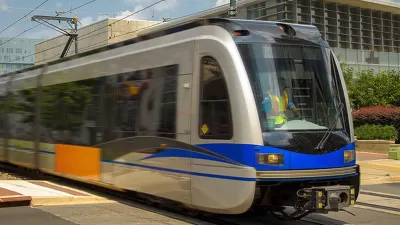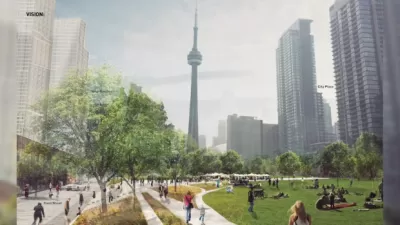Politico takes a critical look at the streetcar trend in American cities—which had some high profile setbacks during 2014—with an eye toward the legacy of the Obama Administration.

Kevin Robillard writes that the American streetcar renaissance is "threatening to run off the tracks — imperiled by cost overruns, lower-than-expected ridership in some places and pockets of local resistance."
"From D.C. to Atlanta, from San Antonio to Salt Lake City, streetcar projects have run into delays, cutbacks and other snags, and some have been scrapped altogether. The most dramatic recent example was November’s demise of a $550 million, state-aided streetcar project in the liberal, traditionally pro-transit D.C. suburb of Arlington County, Va., which had turned politically toxic as its price tag more than doubled."
Robillard presents streetcars as a product of the Obama Administrations collection of urban initiatives, supported by funding from TIGER grants. Former Transportation Secretary Ray LaHood, however, is quoted in the story explaining the political agenda behind the nation's rapidly expanding portfolio of streetcar projects: "former Transportation Secretary Ray LaHood, a major streetcar booster, is defiant. While the Obama administration changed its funding guidelines in 2010 to make more streetcar projects eligible for federal grants, the boom happened 'not because President Obama or Ray LaHood wanted, but because these communities wanted them,' he said. 'This is what mayors wanted. This is what city councils wanted.'"
FULL STORY: A streetcar not desired?

Alabama: Trump Terminates Settlements for Black Communities Harmed By Raw Sewage
Trump deemed the landmark civil rights agreement “illegal DEI and environmental justice policy.”

Study: Maui’s Plan to Convert Vacation Rentals to Long-Term Housing Could Cause Nearly $1 Billion Economic Loss
The plan would reduce visitor accommodation by 25% resulting in 1,900 jobs lost.

Planetizen Federal Action Tracker
A weekly monitor of how Trump’s orders and actions are impacting planners and planning in America.

Waymo Gets Permission to Map SF’s Market Street
If allowed to operate on the traffic-restricted street, Waymo’s autonomous taxis would have a leg up over ride-hailing competitors — and counter the city’s efforts to grow bike and pedestrian on the thoroughfare.

Parklet Symposium Highlights the Success of Shared Spaces
Parklets got a boost during the Covid-19 pandemic, when the concept was translated to outdoor dining programs that offered restaurants a lifeline during the shutdown.

Federal Homelessness Agency Places Entire Staff on Leave
The U.S. Interagency Council on Homelessness is the only federal agency dedicated to preventing and ending homelessness.
Urban Design for Planners 1: Software Tools
This six-course series explores essential urban design concepts using open source software and equips planners with the tools they need to participate fully in the urban design process.
Planning for Universal Design
Learn the tools for implementing Universal Design in planning regulations.
Caltrans
Smith Gee Studio
Institute for Housing and Urban Development Studies (IHS)
City of Grandview
Harvard GSD Executive Education
Toledo-Lucas County Plan Commissions
Salt Lake City
NYU Wagner Graduate School of Public Service





























